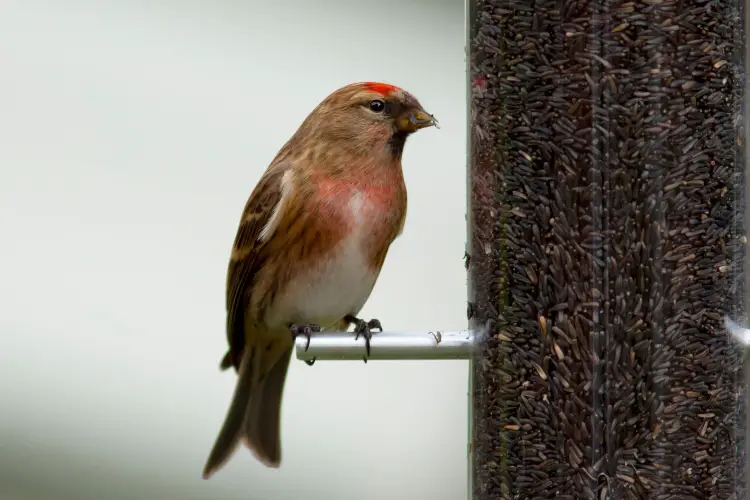Herbivorous birds, also known as granivores, are avian species that predominantly eat seeds, nuts, and grains from plants for sustenance. While most birds are omnivores that eat insects, fruit, nectar as well as seeds, there are several bird species that have adapted to be primarily herbivorous.
These granivorous birds play an important ecological role by dispersing seeds and helping vegetation propagate. In this blog post article, we will discuss 20 common herbivorous bird species and provide details on their main dietary components.
20 Herbivorous Bird Specie
1. Quail
Diet
Quails predominantly feed on seeds from herbaceous plants, shrubs as well as agricultural grains like corn, wheat, sorghum, oats among others. They also supplement their diet with green vegetation, berries and insects, especially during their breeding season when they need extra protein.
2. Turkey
Diet
Wild turkeys are omnivores but their diet is 90% plant-based, mostly consisting of nuts, seeds, fruits and leafy vegetation. They forage on the ground for acorns, hickory nuts, chestnuts, hazelnuts as well as seeds from ragweed, tickseed, pokeberry and many other plants.
3. Partridge
Diet
Partridges are seed-eating specialists that predominantly forage on the ground for seeds, such as buckwheat, sunflower, smartweed as well as agricultural grains like wheat, millet and corn. They supplement their diet with greens, berries and insects.
4. Pigeo
Diet
Pigeons and doves have a diet comprised of over 90% seeds and grains such as corn, wheat, rice, oats as well as a variety of wild herbaceous plants. They also eat fruit, greens and sometimes insects and worms.

5. Grouse
Diet
Grouse species like the ruffed grouse and spruce grouse feed mainly on buds, catkins, leaves and twigs from trees and shrubs. Their winter diet shifts to berries, seeds and nuts like beechnuts and acorns as well as some evergreen needles and rose hips.
6. Sparrow
Diet
Different sparrow species predominantly consume small seeds from grass and small plants, including chickweed, knotgrass, buckwheat and grain crops. They also eat fruit, nectar and small insects to supplement their diet.
7. Goldfinch
Diet
Goldfinches primarily feed on small herbaceous plant seeds from thistles, teasels, ragweed and other composites. They also eat buds, sap and fruit. Nyjer seed is a particular favorite among goldfinches.
8. Pigeon Guillemot
Diet
The pigeon guillemot’s diet is 80-90% vegetarian, consisting mostly of marine vegetation and aquatic invertebrates. Their main food items include seaweed, seagrass, kelp, marine algae and aquatic insects like isopods, amphipods and mollusks.
9. Crossbill
Diet
Crossbills have uniquely adapted beaks to extract seeds from pine cones and their diet consists almost entirely of conifer seeds like spruce, hemlock, cedar and juniper. They also consume some insects and fruits.

10. Horned Lark
Diet
Horned larks predominantly forage on bare ground for small seeds from grasses, ragweed, pigweed, thistle and other herbaceous plants. Their diet is supplemented with buds, leaves and occasional insects.
11. Snow Bunting
Diet
Snow buntings chiefly feed on seeds from alpine grasslands as well as agricultural grains. During winter, they mostly subsist on seeds from weeds that poke through the snow. They also eat buds, shoots and berries in small quantities.
12. Bobolink
Diet
Bobolinks primarily eat seeds from grasses and grain crops like rice, oats and hay fields. They supplement their diet with some berries, buds and insects, especially during breeding season when they need extra protein for their young.
13. Redpoll
Diet
Redpolls forage in flocks and mostly consume birch, alder and conifer seeds. They also feed on catkins, buds, flowering grasses, agricultural grains and small insects to meet their nutritional needs.

14. Painted Bunting
Diet
Painted buntings eat millet, fonio, sesame and grass seeds predominately. During breeding season, they consume more berries and insects to access important nutrients for their chicks. The seeds make up over 85% of a painted bunting’s annual diet.
15. Evening Grosbeak
Diet
The evening grosbeak’s large bill is specially adapted for crushing and hulling seeds. Its diet is predominantly conifer, birch and maple tree seeds as well as some flower seeds and buds. They occasionally supplement with insects and berries.
16. House Finch
Diet
House finches get over 75% of their diet from small seeds from trees and cultivated grains like wheat, oats, buckwheat and sunflower. They also consume berries, buds and blossoms based on seasonal availability.
17. Sharp-Tailed Grouse
Diet
Sharp-tailed grouses usually feed on leaves, flowers, buds and twigs of shrubs during spring. In summer and fall, seeds of wheat, oats and other cultivated cereals and marshland plants form most of their diet along with some insects.
18. Scaly-Breasted Munia
Diet
The scaly-breasted munia predominately eats grass seeds like napier grass and rice. They also feed on grains, vegetable matter, berries and tiny insects to supplement their diet. Munias play an important role in controlling weed and grain pests.
19. Brambling
Diet
The brambling’s winter diet consists of almost 98% beech tree mast. During spring and summer, they consume seeds from herbaceous plants and conifers as well as berries and some insects.
Conclusion
The predominantly herbivorous diets of these seed and grain-eating bird species shows their specialized adaptations for a granivore lifestyle.
While most supplement their diet with fruit, buds and insects too, these 20 birds procure the majority of their sustenance from consuming specific seeds, nuts and plant materials. Their seed dispersal and pest control contributions to the ecosystem remain invaluable. Understanding their dietary habits provides key insights into their biology and behavior.

